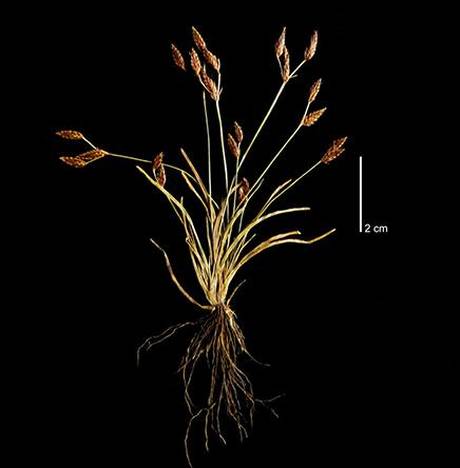Grass-like plant, discovered in Ponmudi, has been named Fimbristylis agasthyamalaensis

Researchers from the University College here have reported the discovery of a new plant species from the Western Ghats biodiversity hotspot. Classified as a sedge, the grass-like plant has been named Fimbristylis agasthyamalaensis, after the locality from which it was found.
The researchers, including post doctoral fellow A.R.Viji and Assistant Professor T.S.Preetha, came across the species during an expedition to the marshy grasslands in the Ponmudi hills within the Agasthyamala Biosphere Reserve. The survey was part of a project funded by the Women Scientists Division of the Kerala State Council for Science, Technology and Environment (KSCSTE).
The finding has been published in Phytotaxa, an international journal of botanical systematics and biodiversity. The authors have recommended a preliminary conservation assessment of the plant as ‘critically endangered,’ according to IUCN criteria. The report says the species is highly prone to wild grazing. As the habitat falls within a tourism spot and the perimeter of a place of worship, the plant is also subject to anthropogenic pressures that could lead to its extinction in the absence of scientific conservation. The new species belongs to the Cyperaceae family. In India, the genus is represented by 122 species, of which 87 are reported from the Western Ghats.
Many of the known Cyperaceae species are medicinal plants or used as fodder. During a critical analysis of the specimens, F.agasthyamalaensis was found to be similar to F.onchnidiocarpa in several characters including the nature of infloresence. But detailed studies revealed distinct features which led to the conclusion that it is a new species. 0Flowering and fruiting were observed from October to March. The authors have stressed the need for more scientific studies to determine the potential uses of the new species.